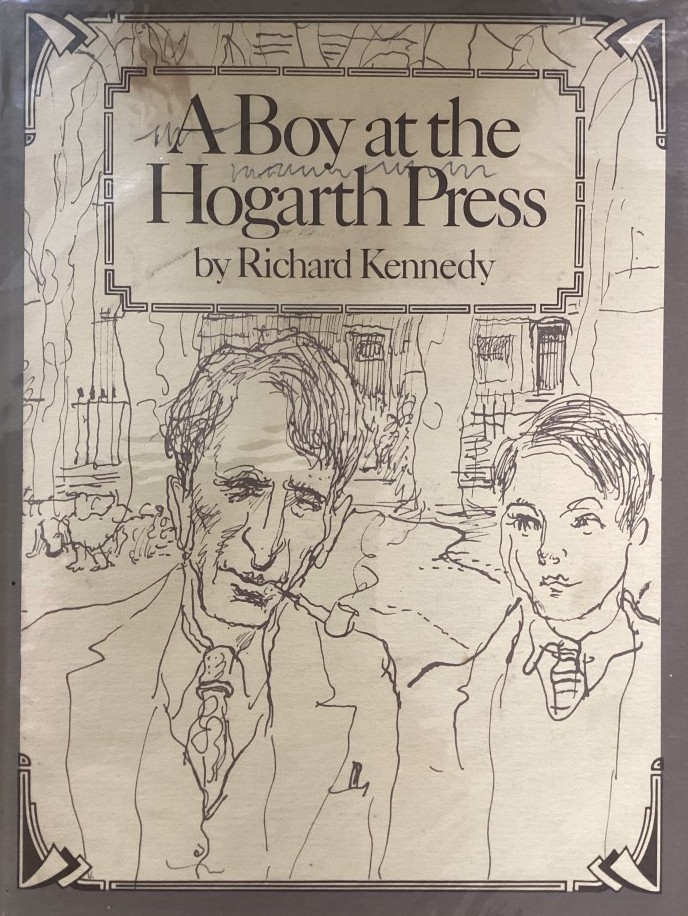Inspiring Older Readers
 posted on 25 Jun 2017
posted on 25 Jun 2017
A Boy At The Hogarth Press by Richard Kennedy
In 1928 public schoolboy, Richard Kennedy left Marlborough school at the age of 16 with no qualifications to show for his efforts. But, as is so often the case for the privately educated, it’s who you know and not what you know that determines your future. Kennedy’s Uncle George just happened to know Leonard and Virginia Woolf and wangled Richard an ‘apprenticeship’ of sorts at their recently established Hogarth Press.
Thirty years later Kennedy published this memoir of the two years he spent there as a sort of hapless factotum, running errands for the Woolf’s, their visitors and the authors who passed through the offices. He really wanted to be an artist and in fact he would go on to carve out a decent career as an illustrator. His skills in this area are also on show in this book – I think I might argue that the drawings are more entertaining than the written material.
There are people that find the Bloomsbury Set irresistible and will read anything about the group but I’m sure they’ll find this quite different to anything that normally comes their way. Kennedy was really the most marginal player in the story of the Hogarth Press but what he did have was a remarkably intimate view of the day to day life and workday habits of Leonard and Virginia in particular but also on those orbiting the couple.
What we get here are short episodes in the life of the Hogarth Press in a sort of journal or diary kept by Kennedy at the time. Both in format and in sensibility there is something here that is really reminiscent of George and Weedon Grossmith’s Diary of a Nobody with Kennedy dramatizing and exaggerating the most everyday events in a Pooterish fashion – for example, a wobbly bookshelf becomes a major dramatic centrepiece and the inevitability of its collapse triggers an amusing anecdote about Woolf and a visitor completely ignoring the cascade of leaflets tipped onto their heads.
What is nice here is the way the normally publicity conscious Bloomsbury types are caught and profiled off-guard and in everyday mode. Kennedy is accepted enough to become part of the furniture, sharing confidences with Leonard and smoking roll-your-own shag tobacco cigarettes with Virginia.
But the book comes to life through the black and white pencil and pen drawings which are tremendously evocative and delightfully informal. More than any of the journal entries the drawings bring the atmosphere of the Hogarth Press offices to life and allow us a glimpse into literary life in between the wars.
As a novel little bonus Kennedy also gives us a wonderful foldout graphic showing what the layout of the Hogarth Press’s three story house was like in 1928 – a delightful touch to finish off what is, in truth, a slight but ultimately charming book.
Terry Potter
June 2017



